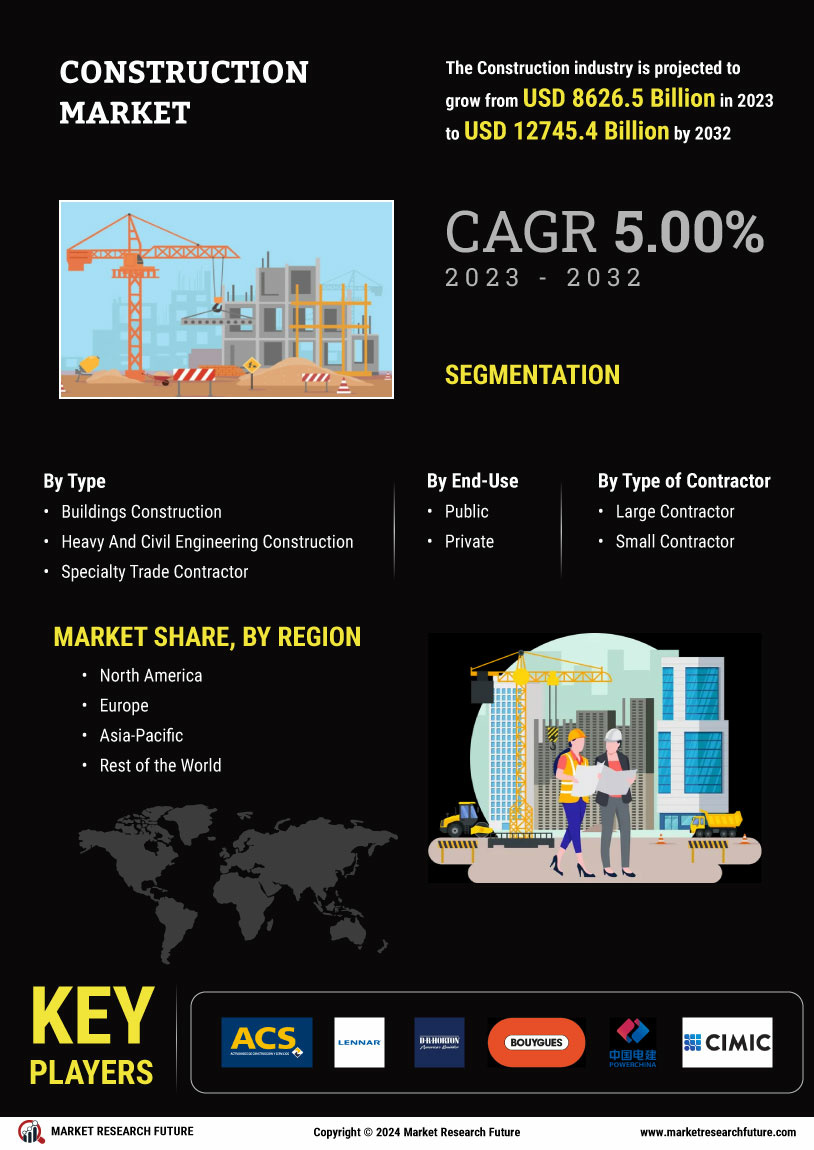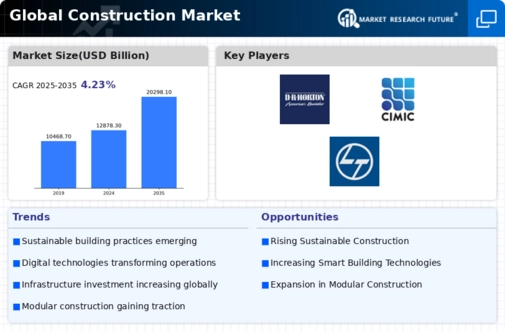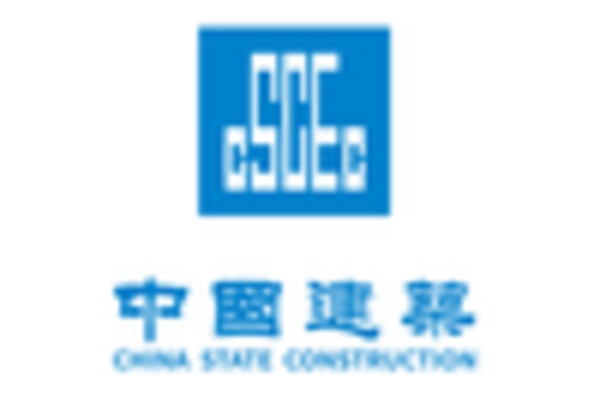Technological Advancements
Technological advancements are reshaping the construction landscape, driving efficiency and innovation within the industry. The integration of Building Information Modeling (BIM), drones, and 3D printing is revolutionizing project management and execution. For instance, the adoption of BIM can reduce project costs by up to 20% and improve collaboration among stakeholders. The Global Construction Industry is experiencing a shift towards digital tools that enhance productivity and reduce waste. Moreover, the rise of smart construction technologies, such as IoT and AI, is expected to streamline operations and improve safety on job sites. As these technologies become more prevalent, they are likely to attract investment and foster growth in the construction sector.
Urbanization and Population Growth
The rapid pace of urbanization and population growth is a primary driver of the construction market. As more individuals migrate to urban areas, the demand for housing, infrastructure, and commercial spaces intensifies. According to recent data, urban areas are expected to house nearly 68% of the world's population by 2050. This trend necessitates significant investment in the construction sector to accommodate the increasing population density. The Global Construction Industry is likely to see substantial growth as cities expand and require new residential and commercial developments. Furthermore, the need for improved transportation networks and public facilities will further stimulate construction activities, leading to a robust market environment.
Government Infrastructure Investments
Government infrastructure investments play a crucial role in driving the construction market. Many nations are prioritizing infrastructure development to stimulate economic growth and improve public services. For example, in 2025, it is projected that global infrastructure spending will reach approximately 4 trillion USD annually. This surge in investment is expected to create numerous opportunities within The Global Construction Industry, particularly in sectors such as transportation, energy, and water management. Additionally, public-private partnerships are becoming increasingly common, allowing for collaborative efforts in funding and executing large-scale projects. Such initiatives are likely to enhance the overall market landscape and encourage further investment in construction.
Sustainability and Green Building Initiatives
Sustainability and green building initiatives are gaining traction within the construction market, driven by increasing awareness of environmental issues. The demand for eco-friendly materials and energy-efficient designs is reshaping construction practices. The Global Construction Industry is witnessing a shift towards sustainable practices, with many projects aiming for certifications such as LEED or BREEAM. This trend is not only beneficial for the environment but also appeals to consumers who prioritize sustainability. As regulations become stricter and incentives for green building increase, construction firms are likely to adapt their strategies to meet these demands, potentially leading to a more sustainable future for the industry.
Economic Recovery and Investment Opportunities
Economic recovery in various regions is fostering investment opportunities within the construction market. As economies stabilize, there is a renewed focus on infrastructure development and real estate projects. The Global Construction Industry is poised to benefit from increased private and public sector investments, particularly in emerging markets where growth potential is substantial. Analysts suggest that the construction sector could see a compound annual growth rate of around 5% over the next few years. This recovery phase presents a unique opportunity for construction firms to expand their operations and explore new markets, ultimately contributing to the overall growth of the industry.


















Leave a Comment